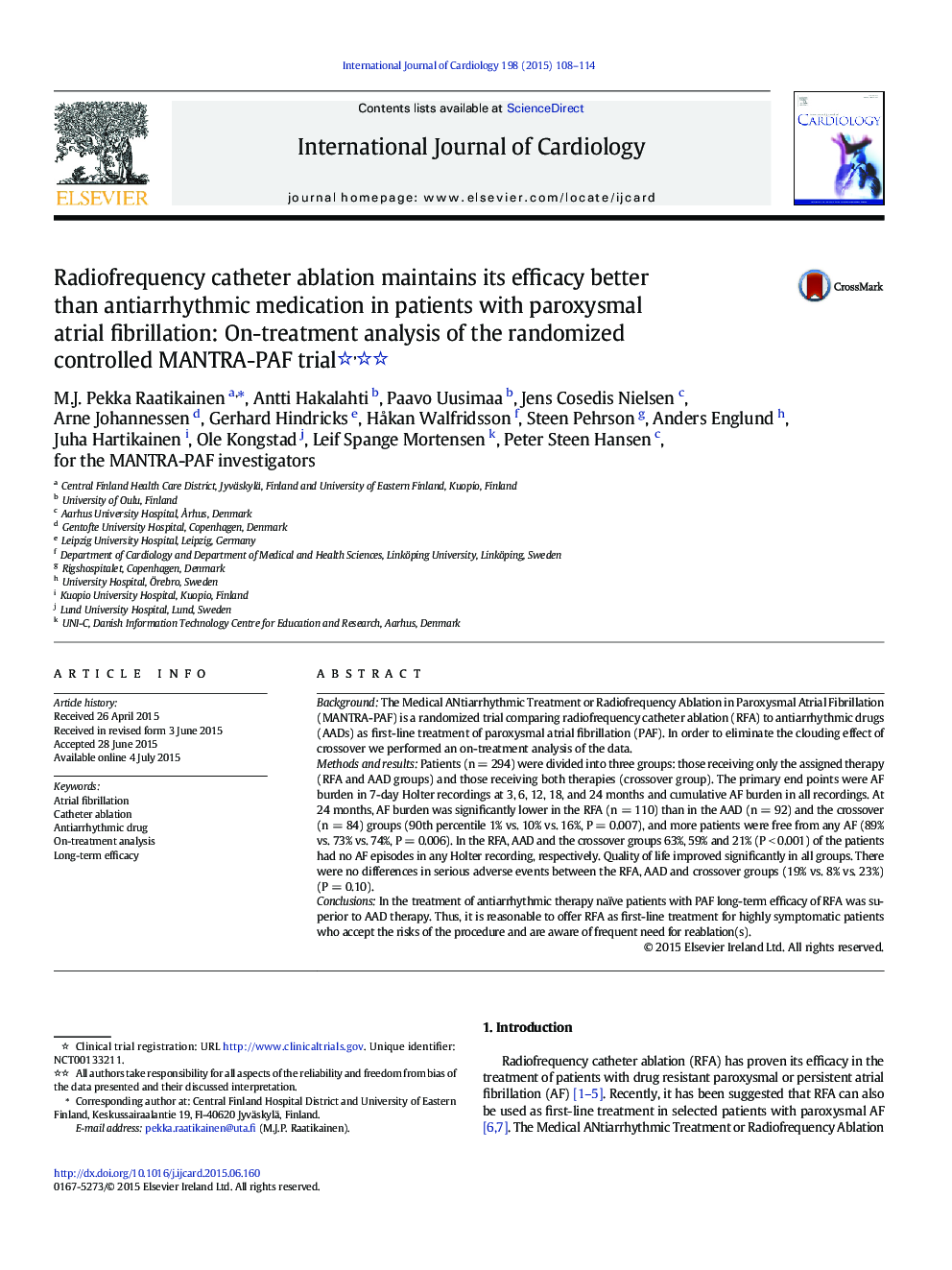| کد مقاله | کد نشریه | سال انتشار | مقاله انگلیسی | نسخه تمام متن |
|---|---|---|---|---|
| 2929015 | 1576154 | 2015 | 7 صفحه PDF | دانلود رایگان |

• Long-term efficacy of catheter ablation was superior to medication in paroxysmal AF.
• At 2 years AF burden was lower and more patients had no AF in the ablation group.
• There were no differences in serious adverse events between the therapies.
• AF burden at baseline was an independent predictor of treatment failure.
• Our data reinforce the use of ablation as initial treatment in selected AF patients.
BackgroundThe Medical ANtiarrhythmic Treatment or Radiofrequency Ablation in Paroxysmal Atrial Fibrillation (MANTRA-PAF) is a randomized trial comparing radiofrequency catheter ablation (RFA) to antiarrhythmic drugs (AADs) as first-line treatment of paroxysmal atrial fibrillation (PAF). In order to eliminate the clouding effect of crossover we performed an on-treatment analysis of the data.Methods and resultsPatients (n = 294) were divided into three groups: those receiving only the assigned therapy (RFA and AAD groups) and those receiving both therapies (crossover group). The primary end points were AF burden in 7-day Holter recordings at 3, 6, 12, 18, and 24 months and cumulative AF burden in all recordings. At 24 months, AF burden was significantly lower in the RFA (n = 110) than in the AAD (n = 92) and the crossover (n = 84) groups (90th percentile 1% vs. 10% vs. 16%, P = 0.007), and more patients were free from any AF (89% vs. 73% vs. 74%, P = 0.006). In the RFA, AAD and the crossover groups 63%, 59% and 21% (P < 0.001) of the patients had no AF episodes in any Holter recording, respectively. Quality of life improved significantly in all groups. There were no differences in serious adverse events between the RFA, AAD and crossover groups (19% vs. 8% vs. 23%) (P = 0.10).ConclusionsIn the treatment of antiarrhythmic therapy naïve patients with PAF long-term efficacy of RFA was superior to AAD therapy. Thus, it is reasonable to offer RFA as first-line treatment for highly symptomatic patients who accept the risks of the procedure and are aware of frequent need for reablation(s).
During long-term follow-up radiofrequency ablation (RFA) maintained its efficacy better than antiarrhythmic drug (AAD) therapy in patients with paroxysmal atrial fibrillation (AF). At 24 months, AF burden was significantly lower and more patients were free from AF in the ablation than the other groups. There were no significant differences in serious adverse events between the groups.Figure optionsDownload high-quality image (78 K)Download as PowerPoint slide
Journal: International Journal of Cardiology - Volume 198, 1 November 2015, Pages 108–114